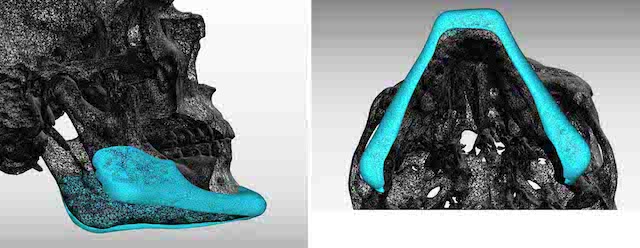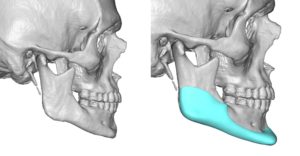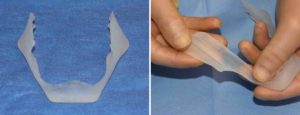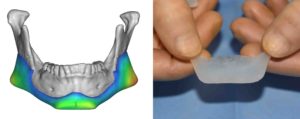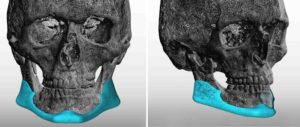Background: Aesthetic evaluation of the lower third of the face is historically based on the concepts of the facial thirds. This is a frontal view concept evaluating the vertical relationship/ratios of the upper, middle and lower facial thirds. This linear measurement can detect a short lower third of the face which is aesthetically treated by vertical chin lengthening.
But when it comes to the side or profile view of the face, the facial thirds concept fails to be useful. This is because in side profile the lower third of the face is at an angle and what works back at the jaw angle does not work for the chin. This change in vertical heights is known as the mandibular plane angle. While it is traditionally an orthodontic and cephalometric measurement, it has value as an aesthetic concept in jawline augmentation. This is because using custom jawline implants, who are connected between the chin and the jaw angles, can effectively change the tilt of the mandibular plane angle by its design.
In the high mandibular plane angle patient, vertical jaw angle lengthening is needed and the chin either stays the same or is vertically shortened. Conversely in the low or near flat mandibular plane angle patient, the chin must be vertically lengthened as the jaw angle can not be vertically shortened
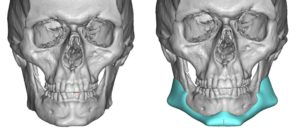

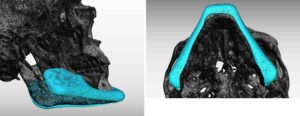
Case Highlights:
1) The low mandibular plane angle patient needs an aesthetic rotation of the jawline. jawline augmentation that vertically lengthens the chin and widens the jaw angles.
2) Aesthetic rotation of the jawline to increase the mandibular plane angle requires vertical lengthening of the chin and widening of the jaw angles.
3) A preoperatively designed custom jawline implant allows for the most effective change in the mandibular plane angle.
Dr. Barry Eppley
Indianapolis, Indiana

